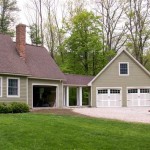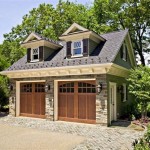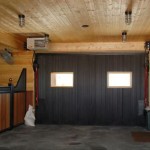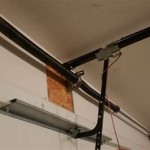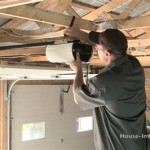How to Make a Garage Cooler in Summer
Garages, often constructed without adequate insulation and ventilation, can become unbearably hot during summer months. This extreme heat can damage stored items, make working in the garage uncomfortable, and even pose health risks. Creating a cooler environment within the garage is therefore essential for maintaining usability and protecting valuable possessions. Several methods can be employed, ranging from simple, low-cost solutions to more complex and expensive installations.
Approaching the challenge of cooling a garage requires a comprehensive strategy. This strategy should consider the existing insulation, ventilation options, and potential for heat gain through various surfaces. It is not always necessary to invest heavily in expensive air conditioning systems. Often, a combination of cost-effective measures can produce a significant improvement in garage temperature.
Improving Garage Insulation
Insulation acts as a barrier to heat transfer, preventing external heat from entering the garage during the summer and retaining heat inside during the winter. A poorly insulated garage will quickly absorb heat, making it difficult to cool effectively. Upgrading or installing insulation is a primary step in creating a cooler environment.
The primary areas for insulation improvement are the garage door, walls, and ceiling. The garage door is frequently a significant source of heat gain due to its large surface area and often thin construction. Insulation kits specifically designed for garage doors are available, typically consisting of rigid foam boards that can be cut to fit each section of the door. These kits are relatively inexpensive and easy to install, providing a noticeable reduction in heat transfer.
Walls, particularly those exposed to direct sunlight, can also contribute significantly to heat build-up. If the garage walls are unfinished, installing fiberglass batts or rigid foam insulation is recommended. Fiberglass batts are a cost-effective option, but require careful handling due to potential skin and respiratory irritation. Rigid foam insulation, while more expensive, offers higher R-value (resistance to heat flow) and is easier to work with. Ensure proper vapor barrier installation to prevent moisture accumulation within the wall cavity.
The garage ceiling, especially if located beneath an uninsulated attic, is a major source of heat gain. Insulating the ceiling will prevent heat from radiating downwards into the garage. Similar to wall insulation, fiberglass batts or rigid foam insulation can be used. Blown-in insulation, such as cellulose or fiberglass, is another option, particularly suited for attics with limited access. The R-value of the ceiling insulation should be higher than that of the walls, as heat rises.
Addressing any air leaks around windows, doors, and other openings is also crucial. Weather stripping and caulk can be used to seal gaps and prevent hot air from entering the garage. This simple step can significantly improve the effectiveness of the insulation and reduce energy consumption.
Enhancing Garage Ventilation
Ventilation is the process of circulating air, which helps to remove hot air and introduce cooler air. Adequate ventilation is essential for preventing heat build-up and maintaining a comfortable environment. Garages often lack sufficient natural ventilation, necessitating the implementation of mechanical ventilation systems.
Natural ventilation can be improved by opening windows and doors, creating cross-ventilation. However, this method is only effective when the outside air temperature is lower than the inside air temperature. In many summer situations, this is not the case. Furthermore, open windows and doors can compromise security and allow insects and dust to enter the garage.
Mechanical ventilation systems, such as exhaust fans and whole-house fans, are more effective at removing hot air from the garage. An exhaust fan installed in the ceiling or wall can draw out hot air and vent it to the outside. The size of the fan should be appropriate for the size of the garage, ensuring sufficient air exchange. Consider installing a thermostatically controlled exhaust fan that automatically turns on when the temperature reaches a certain level.
Whole-house fans, typically installed in the attic, can also be used to ventilate the garage. These fans draw air from the living spaces and exhaust it to the outside, creating a negative pressure that pulls cooler air into the garage through open windows or doors. Whole-house fans are particularly effective at night when the outside air temperature is lower.
Powered attic ventilators (PAVs) are another option for improving ventilation, particularly if the garage has an attic space. These fans are installed in the roof and automatically exhaust hot air from the attic, reducing the overall heat load on the garage. PAVs can be thermostatically controlled or equipped with a humidistat to prevent moisture build-up in the attic.
Creating proper airflow is crucial for effective ventilation. Ensure that there are intake vents or openings to allow cooler air to enter the garage as hot air is exhausted. Without sufficient intake, the ventilation system will be less effective.
Implementing Cooling Strategies
Beyond insulation and ventilation, several other strategies can be employed to further cool the garage. These strategies focus on reducing heat generation within the garage and utilizing cooling devices to lower the air temperature.
Minimizing heat-generating activities during the hottest part of the day can help to reduce the overall heat load on the garage. Avoid using power tools, machinery, or other equipment that generates heat during peak hours. If possible, schedule these activities for cooler times of the day, such as early morning or late evening.
Shading windows and doors can prevent direct sunlight from entering the garage, reducing heat gain. Install awnings, blinds, or curtains to block sunlight. Reflective window film can also be applied to the glass to reflect a portion of the incoming solar radiation. Consider planting trees or shrubs outside the garage to provide natural shade.
Portable evaporative coolers, also known as swamp coolers, can be used to cool the air in the garage. These devices work by evaporating water, which absorbs heat from the air and lowers the temperature. Evaporative coolers are most effective in dry climates where the humidity is low. They require a source of water and should be positioned to allow for adequate air circulation.
Portable air conditioners can also be used to cool the garage, but they are more expensive than evaporative coolers. Portable air conditioners use refrigerant to cool the air and require venting to the outside to exhaust hot air. They are more effective in humid climates than evaporative coolers. Consider the size of the garage when selecting a portable air conditioner to ensure sufficient cooling capacity.
Dehumidifiers can help to reduce humidity levels in the garage, which can make the air feel cooler and more comfortable. High humidity can trap heat and make it difficult for the body to cool down. Dehumidifiers remove moisture from the air, creating a drier and more comfortable environment.
Painting the garage door and exterior walls with a light-colored, reflective paint can help to reduce heat absorption. Light colors reflect sunlight, while dark colors absorb it. This simple step can make a noticeable difference in the temperature of the garage.
Furthermore, consider using radiant barriers in conjunction with insulation. Radiant barriers reflect radiant heat, preventing it from entering the garage. These barriers are typically installed in the attic or on the underside of the roof.
By implementing a combination of these strategies, it is possible to significantly reduce the temperature in the garage and create a more comfortable and usable space during the summer months. The specific measures that are most effective will depend on the individual characteristics of the garage and the local climate.

11 Garage Cooling Ideas Options Solutions

How To Cool A Garage In Summer Artisan Doorworks

How To Keep Your Garage Cool In The Summer Door Pros

How To Cool A Garage Fast

Keep Your Garage Cool In The Summer Easy Cheap Diy Youtube

How To Air Condition Your Garage Cheap Diy

5 Ways To Make Your Garage Cooler In The Summer

Garage Cooling Solutions 9 Tips To Help You Beat The Heat

How To Keep Your Garage Cool In The Summer Viking

The Easiest Ways To Keep Your Garage Cool During Summer Home Garden
See Also

